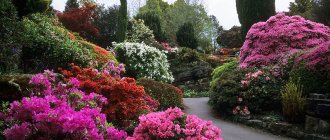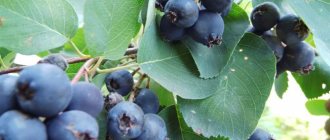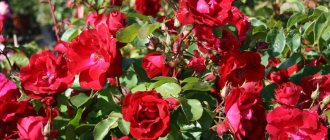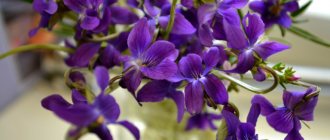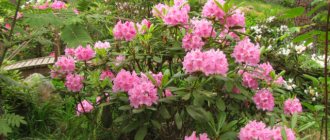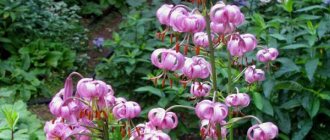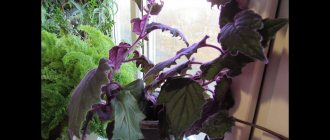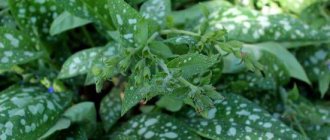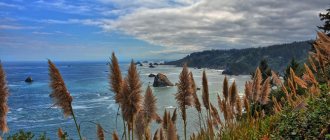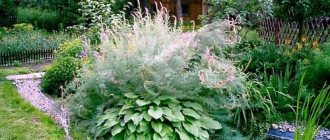Description of rhododendron: varieties and varieties
The genus of rhododendrons is quite extensive - more than 1,000 species, which include diverse varieties of this wonderful plant. The natural distribution area of rhododendrons is limited to eastern countries: China, Japan, Korea, the Himalayas; some varieties of the plant are found in the Caucasus, North America, northern Africa and Australia. In European territory, two varieties of rhododendron grow in the mountainous regions of Germany.
Rhododendron is a magnificent plant with a long flowering period.
The culture belongs to flowering deciduous or evergreen shrubs of the heather family. The branches of the plant may have smooth bark or pubescence. The leathery, dark green, small, ovoid leaves are sometimes pubescent. The flowers are bell-shaped, funnel-shaped, simple and double. The color of the petals varies depending on the variety: white, pink, lilac, red, purple. Modern varieties of rhododendron are yellow and orange in color. Numerous small seeds ripen in capsules.
Rhododendrons, the cultivation of which is most acceptable in Russia, are limited to 26 species belonging to three groups of plants.
- Evergreens are tall shrubs that do not shed their dark, leathery foliage even in winter. Large flowers are painted in different colors and tones. Growing evergreen rhododendrons in open ground requires compliance with a number of necessary rules: plants are located in places with diffuse shade; the soil for them should include a large amount of peat.
Tip: It is important to choose the right location for evergreen rhododendron species, especially when designing areas in landscape design. These can be all types of conifers, heather, ferns grown in open ground.
- Intermediate (semi-evergreen) - low shrubs that winter well under a layer of snow. The plant is characterized by a compact shape and a huge number of flowers during the flowering period. In winter, the main part of the leathery leaves falls off, leaving only a whorl of leaves at the ends of the branches, from the center of which new foliage grows.
- Deciduous - rhododendrons of this group are most adapted to the conditions of the Russian climate. Growing these plants is not difficult, and the plants themselves do not require special adaptation in winter. Flowering in spring, repeated in autumn.
Rhododendron in landscape design
This plant is picky about how it is used in the landscape. Rhododendron will not find its ideal place everywhere and not with all crops. This is most often due to the requirements of the bush for the soil - it should be acidic or slightly acidic. It can be surrounded by plants with similar requirements.
Rhododendron can be planted as one bush on the lawn or under the canopy of a canopy tree. It looks good in hedges, in the landscape of squares, parks, and forest parks. This is an effective addition to heather gardens and pine groves.
Low-growing varieties are suitable for growing in mixborders, decorative flower beds, and alpine hills. They can also be planted in pots and used to decorate gazebos, terraces, and winter gardens. Many varieties are grown for cutting. Flowers can remain fresh for up to 2 weeks.
Rhododendron is one of the most beloved and beautiful flowering shrubs. Its bright flowers appear in the spring, when many plants are just opening their leaves. There are many types of rhododendrons that are cultivated in garden plots. They not only differ in appearance, but also in care requirements. Therefore, to successfully grow a shrub, you should familiarize yourself with its features in advance.
Video - recommendations for choosing a seedling, planting features and rules for caring for garden Rhododendron in open ground:
What it is?
Rhododendron is a plant belonging to the Heather family. It is a shrubby culture. The average height of shrubs is 0.3 meters. Rhododendron trees come in several varieties.
- Evergreens . Tall shrubs usually fall into this category. In winter they do not fall off. They grow only in soil with a high peat content. The flowers are usually large and come in a variety of bright colors. Requires areas with diffuse shade.
- Deciduous . They tolerate domestic winters best. They have a relatively low level of care requirements. They bloom vigorously, twice a year - in spring and autumn.
- Semi-deciduous or semi-evergreen. They are usually represented by low trees or shrubs, do not grow much and have a compact shape. These are frost-resistant species - they tolerate wintering and cold well. Before the onset of winter, the leaves fall off, except for a small number of leaves at the end of the branches. They later give rise to new leaves in the spring.
Now between 800 and 1300 species and almost 3000 varieties of this plant are known. Among the most famous is the Azalea flower, whose alternative name is indoor rhododendron.
The name of the plant gives a description of its appearance - the first part (Rhodon) means “rose”, and the second (Dendron) means “tree”, which, when combined, form the translation “rose tree”. It is worth noting the pronounced similarity of the above-mentioned azaleas with roses.
Flowers of different varieties and types of rhododendron differ from each other in color and size. The largest recorded flowers of this plant can reach 30 cm in diameter, and the smallest - 1 mm and resemble beads. They come in a wide range of colors and shades - from purple and red to pink and white. Not all flowers have a scent - it depends on the plant variety. They are collected in brushes, less often - in scutes. Flowers can be round, funnel-shaped, tubular or bell-shaped. The leaves have a rigid structure and are arranged alternately. The fruit of rhododendron is a multi-seeded capsule. Seed sizes – 2 mm.
Like most trees and shrubs, rhododendron does not bloom profusely every year. As a rule, vigorous flowering alternates with modest flowering every year. But if you want to get lush flowering of rhododendron bushes every year, then for this you need to get rid of wilted inflorescences by pruning immediately after they bloom.
This will help the plant redistribute its energy to produce new flowers next year.
The root system is distinguished by a large number of fibrous roots and is located close to the surface. In general, it tolerates planting well and quickly adapts to a new place.
The plant prefers cool climates and grows mainly in the northern hemisphere in regions such as Southeast Asia, southern China, the Himalayas, as well as the Japanese islands and parts of North America. One of the differences between this plant and roses is that it prefers to grow in partial shade, on the northern side of slopes, in the mountains and next to bodies of water (seas, rivers and even oceans).
Rhododendron is a perennial plant. The average lifespan of most types of shrubs is 30 years, but, in some cases, with good care and characteristics of the variety, this lifespan can reach several hundred years.
On the domestic territory, only about 20 species can grow, almost all of them are frost-resistant.
What is the difference from other types?
The main characteristic feature of Bloombooks rhododendron is the emission of a subtle aroma when the leaf blades are rubbed. Also, the variety is absolutely unpretentious to the type of substrate - it grows well in soil with both moderate acidity and neutral.
You can learn about the types of azaleas here.
Dimensions and weight (gross)
| Weight: | 100g |
| Height: | 10.0cm |
| Width: | 10.0cm |
| Depth: | 10.0cm |
Additional Information
Country of origin: Germany
Features of growing in cold climates
Some gardeners, having chosen a beautiful specimen of rhododendron and planted it on a plot in the Moscow region, are disappointed, since the bush does not take root and freezes at the first frost. This is not surprising, since the plant was chosen incorrectly.
There are specimens suitable only for warm regions. Planting just such bushes gives unsuccessful results.
Among rhododendrons there are cold-resistant varieties
Residents of the Leningrad region and Moscow region can grow rhododendron in their garden if they choose the right variety. And then the bush will delight gardeners with its exotic beauty.
Among rhododendrons there are cold-resistant varieties. These are deciduous plants of the following varieties: Phukansky, Kamchatka, Schlippenbach, yellow, Japanese. Of the evergreens, the following are suitable: Cavtenby (hybrids: Nova Zembla, Abraham Lincoln, Alfred, Kenningham), Smirnova (hybrids Laika, Dorothy Swift, Gabriel), the largest, golden, short-fruited.
Northern Light plants are suitable for the cold of central Russia: Spicy Lights, Pink Lights, Rosie Lights. Finnish varieties have recently been developed for harsh climates: Hague, Elvira, Mikkeli.
It is not enough to have a cold-resistant variety; you need to plant it correctly and provide the necessary care.
Having chosen a shady place, you need to prepare a soil mixture by mixing peat with garden soil and pine needles. Rhododendron mixture can be purchased at the store. Complex mineral fertilizer is added to the soil. The bush must be planted while maintaining a distance from other trees, the distance should be at least a meter so that the roots do not interfere with the development of the bush.
If the soil is clayey, a 15 cm layer of broken brick is poured onto the bottom of the pit. The size of the pit should be twice the size of the container with the plant. When planting, it is not recommended to bury the root collar of the bush; it should be flush with the surface of the earth. After compacting the soil, the rhododendron needs to be watered.
Caring for the plant is the same as for a regular garden species.
It is necessary to adhere to certain rules, these are:
- maintain soil acidity at the proper level, avoid alkalization. Avoid getting ash, dolomite, lime into the soil, as these substances alkalize the soil.
- You cannot loosen the soil around the planting , as you can damage the root system located close to the surface of the earth. Mulching is used instead
- plant rhododendron on the northern shady side of the site. Protect the bush from direct sunlight by covering it with cloth or gauze.
- do not flood the plant. In summer, water twice a week.
Constantly falling rains in the fall can cause rapid growth of numerous shoots. Since they die with the onset of cold weather before they have time to ripen, their appearance can be avoided by spraying the bush with potassium monophosphate or sulfate (1.0%). This procedure prevents the development of young shoots and promotes the formation of flower buds.
You cannot water the plant after spraying, even if the weather is dry.
Before the onset of cold weather, the bush is covered with a frame with film and secured with twine to prevent cold air from entering.
Rhododendron species
The rhododendron genus is surprisingly diverse, combining deciduous trees and evergreen shrubs. About eighteen species are common in our country. Let's look at some of them!
Golden rhododendron
An evergreen, squat variety spreads near the ground at a height of about 30-50 cm. It has a spreading crown with large long leaves up to 8 cm long, strewn with yellow-golden flowers. Golden rhododendron lives in the Far East, Altai Territory, Mongolia and some regions of Japan.
Katevba rhododendron
A spectacular winter-hardy bush, covered with long leathery leaves, stretches up to 4 m. Large inflorescences bloom on it, each of which consists of 15-20 flowers of an unusual purple-lilac hue.
Rhododendron Vazea
Alpine rhododendron thrives in northwestern latitudes. This is a shrub, up to 2-5 m with small bright leaves and pale pink flowers. In autumn it turns a rich crimson color and remains decorative. Vazea is considered one of the most beautiful wild rhododendrons.
Caucasian rhododendron
A low, spectacular rhododendron up to half a meter high often grows creeping, so it looks good in garden landscaping. It has unusual, leathery, oval-shaped leaves with slightly curled edges. The flowers look like funnels of a yellowish or greenish color.
Atlantic rhododendron
The North American variety loves moist forests, swamps and sandy coasts. Although it grows to little more than half a meter, it has a dense, spreading crown with large, ovate leaves. The white flowers have a pink tint and are renowned for their strong scent.
Yellow rhododendron
This beautiful, delicate variety is also called Pontic azalea. It is notable for its large vanilla-yellow or orange flowers with a distinct aroma. This is a deciduous, frost-resistant variety that grows upward from 2 m.
Types and varieties of rhododendrons
The genus of rhododendrons includes more than 600 shrubs, subshrubs and trees, among which there are both deciduous and semi-deciduous, as well as evergreen. Some unique species survive exclusively in natural conditions or are not cultivated due to their developmental characteristics:
- Caucasian rhododendron is rare in gardens. In its natural habitat it is used primarily as a honey plant. Stems are lodging, up to 1.5 m in length; the leaves are oblong-oval, with a reddish edge below. The flowers are white, with red specks in the throat, up to 3 cm in diameter; collected in inflorescences-umbrellas.
- Adams' rhododendron is an evergreen frost-resistant shrub not exceeding 50 cm in height; grows in rocky highlands. The flowers are light, pinkish, about 1.5 cm in diameter. Not cultivated due to slow growth.
Most rhododendrons are polymorphic, making classification difficult. They are usually divided into Caucasian and Far Eastern. The Caucasian species include, for example, yellow rhododendron, a highly ornamental deciduous shrub that grows up to 2 m; branches well and grows quickly in breadth. The leaves are obovate, long, up to 12 cm, with a finely serrated edge. The flowers are orangeish or yellowish, up to 5 cm in diameter, with a prominent narrow-cylindrical tube of stamens; collected in umbrella-shaped inflorescences. It is actively cultivated; several hybrid forms and varieties have been developed on its basis.
Far Eastern ones are found more often in gardens, for example, Schlippenbach Rhododendron is a deciduous species that came to gardens from Northeast China. Relatively winter-hardy. Shoots up to 2 m, leaves obovate, dark green, with a wavy edge, collected at the tops. Flowers are up to 6 cm in diameter and bloom in April – May. In nature they are pinkish, with purple speckles.
Frost-resistant rhododendrons are popular among gardeners:
- Dahurian rhododendron (or Ledebura) - this particular variety is popularly called “Siberian wild rosemary”. The shoots are densely branched, up to 2 m. The leaves are oval, dark green, glossy; turn brown in autumn. The flowers are funnel-bell-shaped, white, pinkish or lilac, up to 4 cm in diameter, bloom early. It blooms already at the age of three years. Actively cultivated.
- The artificially bred hybrid Cunninghams White is an evergreen, growing up to 2 m, shrub, spreading and densely branched. The leaves are dark green, elliptical, leathery, large. The corolla is white, with pale pink markings on the upper petals and brownish specks. The buds bloom after the threat of return frosts has passed, in late spring.
- Rhododendron Hague is a hybrid bred in Finland. Evergreen, parents unknown. The bush is slow-growing, up to 2 m in height, with a round or pyramidal dense crown. The leaves are dark green, without pubescence. The flowers are pinkish, with red specks at the throat, up to 10 cm in diameter.
- Bloombux is a hybrid obtained from the evergreen and winter-hardy rhododendron coarse-haired. The distinctive feature of the wild “ancestor” - its compact size - was passed on to the hybrid; it does not exceed 50-60 cm, which allows it to be used as a bonsai. The flowers are pale pink, up to 6 cm in diameter, and have a pleasant aroma.
- Yakushimansky (Yakushimansky) is one of the forms of wild rhododendron Degron, which is actively used for breeding winter-hardy varieties. The leaves, like most evergreens, are oblong-elliptical, without pubescence, dark green. The flowers are bell-shaped, pale pink, with crimson specks, up to 6 cm in diameter; 10-12 pieces are collected in inflorescences. On its basis, the popular variety Rhododendron Fantastica was developed: squat, no taller than a meter, with pinkish-purple petals decorated with yellowish-green specks.
- Rhododendron Smirnova is an evergreen shrub reaching 2 m in height. The leaves are oblong-elliptical. Flowers can reach 15 cm in diameter, collected in dense inflorescences of 10-14 pieces. The corolla is funnel-shaped; petals with a slight bend and a wavy edge, often light purple or mauve, with yellowish specks at the throat. Several winter-hardy hybrids have been bred based on this species.
- Katevbinsky rhododendron is an evergreen winter-hardy species that is actively used in breeding work. The shrub is 2 to 4 m high, wide, and grows quickly compared to other species. The leaves are elliptical, glossy, without pubescence, dark green. The flowers are bell-shaped, up to 15 cm in diameter, collected in dense inflorescences; open up together.
If an evergreen hybrid rhododendron grows in your garden, it most likely came from Katevbinsky, as for example:
- Nova Zembla - bush up to 2 m in height, wide; The leaves are leathery, dark green above, grayish below. Flowers up to 10 cm, deep ruby, with dark brown splashes.
- Katevbinsky Grandiflorum is a common rhododendron, pink, with a lilac tint and an orangeish print at the base of the upper petals. The buds bloom in late spring - early summer, thanks to which Rhododendron Grandiflorum blooms every year. Bush about 2 m in height, densely branched; leaves are ellipsoid.
- Roseum Elegance is a tall, up to 3 m, rhododendron, evergreen, fast-growing, with a wide crown. The leaves are narrowly elliptical, large, glossy; when blooming, brownish-red, then dark green. Flowering occurs at the beginning of June and lasts more than a month. The inflorescences are dense, spherical, and can bear up to 20 buds. Corollas up to 6 cm, funnel-shaped, pinkish, with a reddish-brown marking at the base.
- Rasputin is a densely branched rhododendron shrub up to 1.5 m in height, evergreen, with large elliptical glossy dark green leaves. The flowers are light purple, with darker specks and imprints.
One of the most valuable species is Japanese rhododendron, or garden rhododendron. Under natural conditions, it is found only on the sunny slopes of the mountains of Northern and Central Japan. It is cultivated everywhere as an ornamental plant. It became the basis for most modern varieties and hybrids. This rhododendron is deciduous, with thin branched shoots and a wide crown. Grows up to 2 m. The leaves are oblong, lanceolate, softly pubescent. It blooms relatively late, in May, so the flowers do not freeze. The corollas can reach 12 cm and are mainly colored in reddish, orangeish or yellowish shades. Winter-hardy.
We recommend reading
Rules for autumn transplantation of lilies to another place
When and how to plant lilies in open ground in the fall, care
Planting and caring for galadioli in open ground and pots
Caring for perennial garden primrose in open ground
Planting a plant
Rhododendron: planting and caring for plants in compliance with agrotechnical rules - plant replanting is allowed in spring and autumn. In autumn - in any of three months, in spring - in warm, settled weather, when the soil is no longer frozen (usually April or May).
The choice of place for planting a plant must be done with special care. Rhododendron plantings should be protected from the prevailing wind and direct sunlight. It is important that the shrub is accessible for viewing, then the decorative appearance of the plant during the flowering period will decorate the area and please the eye.
Tip: before planting a plant from a container into open ground, it should be thoroughly saturated with water.
The planting hole for rhododendron bushes is prepared based on the actual size of the root system, and should be 2 times larger in volume. Natural soil should be completely removed. To plant a plant, you need to prepare a special soil consisting of equal parts of heather soil; peat; garden soil or leaf humus; rotted manure; needles (pine).
It is very important to plant the plant correctly, then it will quickly take root.
The prepared hole is filled with the mixture, and a place is prepared in it for planting a rhododendron bush, which must be placed strictly vertically. The soil around the root system of the plant must be compressed tightly; the formation of voids and “pockets” in the planting soil is not allowed. If the groundwater level is high, provision should be made for laying a special drainage layer at the bottom of the pit. The top layer of soil after planting should be mulched with peat chips.
Selecting a location
Seedlings need diffused shade to grow well. In open areas you can grow Canadian, Daurian, Kamchatka varieties of shrubs. Young plants are protected from the wind by artificial fences. Bushes should not be in direct sunlight - it is better to plant them under a spreading tree.
Seedling preparation
Before planting Bloombux seedlings in a permanent place, they need to be saturated with moisture. Water is poured into a large container, to which potassium permanganate or any root growth stimulator can be added, and the plant is immersed in it. First, air bubbles will appear, indicating that the root system is filling with moisture.
Soil preparation
The acidity level of the soil is the most important characteristic for planting rhododendron.
The optimal pH is from 4.5 to 5.5.
If there is excess acidity, the plant may develop chlorosis. The parameter is checked before planting with litmus paper. You can oxidize the soil with commercial soil for rhododendrons.
Landing rules
Planting stages:
- First, a hole is dug under the Bloombux rhododendron with a depth of at least 40 cm and a diameter of about 60 cm. To fill it, you will need nutritious soil consisting of 3.5 buckets of loam and 8 buckets of high-moor peat. The soil is thoroughly mixed.
- Drainage is placed at the bottom, then a third of the soil. The mass is compacted well to remove voids.
- Then the Bloombooks rhododendron seedling is placed vertically in the center and sprinkled with the remaining soil. The soil is compacted again so that there are no air pockets left between the roots. The root collar does not need to be buried; it should remain above the surface.
- Rhododendron Bloombux requires good watering, the main thing is that the soil is wet 20 cm deep.
- To retain moisture, mulch is laid out in the tree trunk circle. These can be oak leaves, pine needles, peat or moss. Mulch thickness – 5-6 cm.
Advice! Often, a planted rhododendron seedling already has the rudiments of buds. It is recommended to pick them, as flowering will worsen the possibility of rooting.
When planting several Bloombux rhododendron seedlings in a row to create a hedge or in single plantings, it is necessary to provide supports and tie the bushes so that the wind does not loosen the root system. Before installing the support, you need to determine the direction of the wind and tilt it towards it.
Watering
The shrub does not tolerate drought or excessive moisture. It is recommended to water it with soft filtered water or rainwater. You can reduce the hardness of the liquid by adding a couple of handfuls of peat to the liquid for 24 hours. Water the plant when the leaves become less elastic and faded. The earth should not dry out. The optimal amount of watering is 1-2 times a week.
Weeding
Weeds are pulled out by hand - a hoe can damage the root system. Instead of weeding, you can carefully treat the soil with herbicides. When treating the soil with chemicals, try not to spray them on the rhododendron. Weeds are eliminated manually monthly.
Watering and fertilizing
If it rains constantly in the summer, then the Bloombooks rhododendron will not need watering. In dry times, the bushes need to be irrigated at least every other day. The depth of soil wetting is at least 15 cm. Watering is carried out early in the morning or evening hours.
Important! In the fall, before the onset of frost, it is necessary to carry out moisture-recharging irrigation.
It is recommended to regularly weed out weeds, but under no circumstances should you loosen the soil. These are the biological characteristics of rhododendrons.
Rhododendron Bloombux grows well in soil rich in humus and organic matter. Immediately after planting, it is recommended to water the seedlings with Argumin solution so that the plant takes root faster. To avoid yellowing, planting leaves are fed with a solution of Iron Chelate.
And now about the annual feeding regime:
- In early spring, organic fertilizers containing nitrogen are added to the bushes. If mineral fertilizers are used, then for each square. m you need to add magnesium sulfate (50 g) and ammonium sulfate (50 g).
- After the end of flowering, you again need to add potassium sulfate (20 g), superphosphate (20 g) and ammonium sulfate (40 g) to each square.
- In July, Bloombux rhododendron bushes are fed with potassium sulfate and superphosphate, 20 g of each fertilizer per square meter. m.
Warning! It is not recommended to feed rhododendrons with lime, wood ash, or fertilizers that can deoxidize the soil.
Landing in the ground
A pit with a diameter of 0.7 m and a width of 0.6 m is prepared in 3–4 weeks and filled with fertile substrate. You can prepare it yourself (mix 8 buckets of high-moor peat and 3.5 buckets of loam) or purchase a store-bought soil mixture. After pouring out, the fertile substrate is compacted.
Landing algorithm:
- Make a small hole.
- Immerse the seedling in a container of water.
- Place the root system in the hole and then carefully fill it with substrate.
- Water the plant thoroughly.
- Fill the area around the tree trunk with natural mulch (pine needles, oak leaves, etc.).
Growing from seeds to seedlings
The seed method is only suitable for species rhododendrons. Before planting the plant in open ground, the seeds are grown for seedlings.
Soil and container
Sowing can be done from the end of December to the end of March. Sowing at the end of November is also allowed. Prepare shallow bowls or containers.
Fill the container with an earthen mixture, which consists of equal parts:
- turf;
- coniferous land;
- sand;
- peat
Before planting, it is better to soak the seeds in water for a day. Distribute them over the surface of the substrate, do not deepen them. Moisten the crops using a sprayer. Sprinkle clean sand on top and cover the crops with glass. Place the containers in a bright place for germination.
Seedling care
For normal seed germination, it is necessary to provide planting with light for 12 hours. To do this, it is recommended to turn on additional lighting. Remove the cover daily to ventilate and moisten the substrate. Shoots may appear within a month. When the seedlings have their first leaves, they are planted at a distance of 2x3 cm from each other. For normal development of the root system, seedlings need to be deepened into the soil by cotyledons.
Transplanting
During the first year of life, seedlings are grown in a cool greenhouse. It can only be planted on the site next year. First dig up the soil, add sand and peat to it. For each seedling, dig a hole slightly larger than the size of the root system. Place the seedlings in holes with a lump of earth strictly vertically. Sprinkle with soil, compact it and water.
Plant care
The transplanted plant requires attention and careful care. In addition to regular, abundant watering, rhododendron requires foliar spraying, especially when planting in late spring. The soil needs to be mulched to retain sufficient moisture. When mulching, you should choose options that increase the acidity of the soil.
The plant requires regular watering
The root system of rhododendrons consists of delicate, thin hairs, similar to matted hair, so loosening the soil, especially deep, should be excluded from flower care measures. Weeds that grow near the plant must be removed periodically.
The appearance of the plant will immediately indicate a lack or excess of water - the leaves of the rhododendron will begin to turn yellow and fall off. Watering must be carried out in sufficient quantities, but without overflowing; this is one of the main rules for caring for crops.
To ensure proper care of rhododendron, it is important to carry out timely pruning of overgrown bushes. To prevent infection of the plant, the cut areas are covered with paint or garden varnish.
Bushes need to be trimmed periodically
Compliance with simple plant care requirements will allow you to grow a wonderful flowering bush.
Preparing for winter
Like any cultivated plant, Bloombux rhododendron requires some activities in the fall. If there has been no rain for a long time and no precipitation is expected, then you will have to water the bushes well. After abundant irrigation, mulch the tree trunk circle. Mulch will not only retain moisture in the soil, but also protect the root system from frost. The layer should be at least 15-20 cm.
In areas with a sharply continental climate, where in winter the thermometer drops below 27 degrees, the bushes are tied with twine and then covered with spruce branches.
In the south such shelter is not required.
Winter hardiness of rhododendron Bloombooks
Almost all rhododendrons, including Bloombux, are frost-resistant plants. If you mulch the tree trunk well to cover the roots, the hybrid can withstand temperatures down to -25 degrees. At lower temperatures, without shelter, the buds may freeze.
Trimming
Thanks to pruning, Rhododendron Bloombooks can be given any shape, which is why the plant is widely used by landscape designers to decorate the site. The fact is that the plant responds well to pruning: the greenery is preserved, the bushes do not get sick. During pruning, you need to remove the growth growing from the roots, otherwise it will choke the bush and flowering will be insignificant.
Rhododendron should be pruned after flowering to avoid damaging the flower buds. But you can replant the bushes only 2-3 weeks after flowering or early in the spring, until the buds swell.
Caring for rhododendron after flowering
Immediately after flowering, the inflorescence is cut off or carefully torn off by hand, trying not to touch the young shoots. If everything is done correctly, then two or three new young shoots will appear in place of the previous inflorescence.
Two weeks after the last feeding, rhododendrons are pruned for rejuvenating or sanitary purposes, leaving the desired height of the plant. The same rejuvenating pruning is carried out in the spring, removing part of the branches above the dormant buds - small thickenings of a pinkish tint on the shoots.
If the rhododendron was grown from seeds, then formative pruning cannot be carried out before the first flowering - otherwise the buds will appear no earlier than after 2-3 years.
In the fall, rhododendron is not fed, but in order to help the roots survive the winter, even before the onset of frost, the soil is mulched with a 5-centimeter layer of rotted manure.
When and how to plant rhododendrons in open ground
When choosing a place for planting, you should take into account that most wild rhododendrons settle on acidic soils in areas adjacent to water bodies, which are characterized by high air and soil humidity. It is advisable to recreate conditions close to natural by planting rhododendrons in the garden. For successful cultivation, it is also important to choose the right “neighbors” and planting time.
Landing dates
For successful rooting, seedlings need coolness. You can plant rhododendron in spring or autumn. In the spring, this is done before the rhododendron begins to bloom flower buds, in April - May.
The optimal time is selected based on the climatic characteristics of the region:
- for central Russia, the Moscow region, as well as in Ukraine and Belarus, the optimal time is at the beginning of May;
- in the Leningrad region, Siberia and the Urals, due to a cold, protracted spring with a high probability of frost, the dates shift to mid-May;
- in the Krasnodar and Primorye Territories, planting begins early, in mid-April.
Autumn planting of rhododendron is used less frequently, since the seedlings may not have enough time to take root before frost occurs. Planting can be carried out at the beginning, no later than mid-October. At this time, azaleas can be planted in areas with warm autumns and a relatively mild first half of winter, for example, in the Moscow region.
Selection of seedlings
Seedlings can be purchased in early spring in specialized stores or markets. Large greenhouse farms can also engage in retail sales. The variety is selected based on the climatic characteristics of the region. For planting in areas with harsh winters, evergreen frost-resistant varieties with a late flowering period are suitable. In warmer areas, preference is given to deciduous hybrids, in which the buds bloom along with the foliage.
Young growth is sold in containers or with an open root system. In the first case, you will not be able to determine whether there are traces of fungal diseases on the roots. Such sprouts are chosen only if you do not plan to plant the rhododendron right away, and you need to “keep” it indoors for some time. When examining seedlings with an open root system, pay attention to mechanical damage, dark wet spots, cut areas with traces of activated carbon - this indicates that the plant was sick. It is better to refuse such a purchase.
It is better to buy seedlings immediately before planting. If there is a need to preserve young plants with an open root system for some time, they are planted in a 2-3 liter container in a mixture of high-moor peat, sand and perlite. Water regularly, avoiding drying out; kept at a temperature of 15-18°C until planting.
Rhododendron in landscape design
When determining a place to grow rhododendron in the garden, keep in mind that it blooms in mid-late spring and continues to open its buds for 1.5-2 months. Azaleas are not planted next to “bright” plants that bloom during the same period. They look harmonious in compositions with thujas, junipers and larches. Many gardeners plant rhododendrons in small groups, 3-5 pieces, in the center or along the perimeter of lawns - during flowering such compositions look impressive. Do not forget that rhododendron does not tolerate proximity to tall trees and shrubs.
Choosing a place in the garden for planting
Since in nature rhododendrons often settle in undergrowth, they are given a slightly shaded place in the garden. In dense shade they will not bloom, and in the sun the leaves will begin to fade and the roots will overheat. Rhododendron needs moisture, but it cannot tolerate waterlogging, so if groundwater is close, drainage channels or a high bed are made. For the same reason, it is better to avoid planting in lowlands that are flooded with melt water in the spring.
Preparing the soil and planting hole
The soil for rhododendron should be nutritious, loose, moisture-absorbing, breathable and acidic. Before planting, the soil is “brought” into compliance with these requirements. Dig a hole 1.5 meters deep and the same width. Fill it with soil mixed with well-rotted compost and high-moor peat. Sand and the top fertile layer of soil taken from under the conifers will help acidify the soil. You can replace them with pine bark or a ready-made mixture for heather or begonias, which can be purchased in specialized stores. They are mixed with loam in a 1:1 ratio, “diluted” with peat and garden soil.
Landing technology
Proper planting makes it easier to grow and care for rhododendrons.
To plant rhododendron
- The pre-prepared planting hole is watered abundantly.
- The roots of the seedlings are soaked in water for several hours.
- They are lowered into the planting hole so that the root collar remains above the ground level.
- Fill with the prepared mixture, tamp it down, and water generously again.
Seedlings must be mulched. To prevent them from bending under the influence of winds, they install supports. Before the azaleas begin to grow, make sure that the soil does not dry out.
Five arguments in favor of rhododendron.
One could say about rhododendron in official language that this plant is promising, and any initial investment in it will be justified. The shrub is generally resistant to adversity and is easy to care for, but it is important not to make a mistake in choosing a variety. If we compare it with the same rose, then there are many arguments to force a convinced rose grower to go over to the side of the enemy.
- Rhododendrons (or, in any case, those species and varieties that will be discussed below) do not require shelter for the winter, unless you are tempted by some heat-loving variety.
- Rhododendrons grow in nice, dense bushes, require little to no pruning, and are disease and pest resistant. Caring for a growing rhododendron is completely easy.
- Rhododendrons are long-lasting. Thirty years is the minimum period you can expect. And some varieties and species are able to survive even such a familiar tree species as birch.
- Rhododendrons never lose their decorative appearance and are ready to work from the first days of spring.
- The shape of the crown, as well as the external characteristics of the leaves of rhododendrons are much more diverse than those of roses. Therefore, rhododendrons have more possibilities in garden design. They are equally organic in both landscape and regular gardens.
Useful properties of rhododendron
Rhododendron is a very beautiful plant, and it also has healing properties that have been used for many years in both official and alternative medicine. The species Rhododendron daurian, golden, Adams, and Caucasian include andromedotoxin, ericolin, arbutin and rhododendrin. The foliage contains ascorbic acid, and in summer its concentration in the plant is highest. Thanks to the substances included in this plant, it has an analgesic, sedative, antipyretic, antibacterial and diaphoretic effect. It can also remove excess fluid from the body, eliminate swelling, shortness of breath, rapid heartbeat, increase cardiac activity, and also reduce venous and blood pressure.
But one should not assume that this plant is absolutely harmless. Products made from rhododendron should not be used by people suffering from serious kidney disease and tissue necrosis, as well as by pregnant and breastfeeding women. It is also recommended that before taking such a remedy for the first time, consult a specialist.
Leave a place in the sun for others
Some consider this a disadvantage, while others consider it an undeniable advantage: rhododendrons grow well in partial shade! They won't dry out in the sun or melt, not at all. They may just get severe sunburn. And they are harmful not only to the decorative appearance of the shrub, but also to its viability. This does not mean that a place in a sunny area for rhododendron has been reserved.
There is a way out: you can always plant something on the eastern side of the bush that, like rhododendron, prefers acidic soil and has a thick, lush crown, which will cast a shadow on our exotic pearl until lunchtime in early spring. Yes, yes, we are talking specifically about a coniferous plant, it’s not for nothing that people everywhere say that conifers are the best neighbors for their deciduous counterparts in color. By the way, if the windows of your house face west or south, feel free to plant rhododendrons in front of them, because the house can also shade shrubs and protect from piercing frosty winds.
In the end, if both options are unacceptable to you, since, for example, your evergreen favorites decorate a rock garden with low plants or are even located among landscape stones, winter shelter (also known as shading) will help solve the problem.
The advantage of this feature of the bush is obvious. Rhododendrons can decorate dimly lit places on your site that are overgrown with weeds and moss, where ordinary plants either simply survive and do not live or die. Not just to fill the void, but to transform the corner. This could be the space between buildings, a place under the crown of a century-old oak tree growing on the property of a beloved neighbor, a composition from the western part of the house or gazebo. The most interesting thing is that evergreen rhododendrons, depending on the variety, not only have a different shade of inflorescence, but also fundamentally differ in height from each other, which means that they can be considered universal in their own way. Not only in a single planting, but also in multi-level compositions, the shrub will look incomparable.
Features of rhododendron
Garden rhododendron is a shrub. Different species may differ from each other in the size and shape of the leaf blades, which are biennial, annual and perennial, petiolate or sessile, alternately arranged, serrate or entire, obovate or ovate. This plant is relatively popular in all countries of the world due to its decorative foliage, as well as beautiful flowers that are part of racemes or corymbose inflorescences, which look like amazingly beautiful bouquets. Flowers can be colored pink, purple, white, red or lilac. The shape of the flowers directly depends on the type and variety of the plant and can be funnel-shaped, tubular, bell-shaped or wheel-shaped. In some species, the flowers have a pleasant smell. The fruit is a five-leaf multi-seeded capsule, inside of which there are two-millimeter seeds. The superficial compact root system of this crop consists of a large number of fibrous roots. Due to the fact that the root system is superficial, replanting rhododendron is quite easy, and the plant tolerates it well. This shrub is considered an excellent early spring honey plant.
Rhododendron: choosing a location, planting, care
Reproduction
| Way | Step-by-step algorithm |
| Sowing seeds |
|
| Cuttings |
|
| Reproduction by layering |
|
Reproduction methods
Seed propagation is possible only for species or varieties. Hybrids are propagated vegetatively. If you need few new plants, it is better to make several layerings so as not to bother with cuttings.
Seeds
Rhododendrons are sown in wide shallow bowls on the surface of a damp peat-sand mixture. Sprinkle with clean washed and calcined sand. Cover with glass and keep in light at high humidity and temperature. Ventilate daily.
Rhododendron seedlings usually hatch within a month. After 2 true leaves appear, they are picked, grown in a greenhouse for the first year, then transplanted into a schoolhouse. They will bloom in the 6-8th season.
Cuttings
Semi-lignified cuttings are suitable for plant propagation. They are cut into 5-8 cm pieces, all leaves are torn off except the top ones, the lower part is treated with a stimulant, and rooted in a mixture of peat and sand. You can use a greenhouse with high temperature and humidity, or cover the planting with a glass cover.
The lower shoots will appear:
- in deciduous species - after 6 weeks;
- evergreen rhododendrons produce roots after 3-4.5 months.
The cuttings are grown in a mixture of peat and pine litter (2:1). In winter, they are kept in good light and a temperature of 8-12 ° C. In spring, the seedling box is buried in an area in partial shade. They are transplanted to a permanent place after 2 years.
Bends
In the spring, a strong shoot located in the lower part of the bush is selected on the rhododendron. It is bent down and buried at least 15 cm deep. The top is tied to a peg, and the part of the shoot directed towards the mother plant is pinned to the ground so as not to be accidentally pulled out.
Water abundantly and often. The next season, the cuttings are separated from the bush and transplanted to a permanent place.
Winter and summer in the same color
For starters, it truly is evergreen! No, this does not mean that it, like a plastic Christmas tree, will remain unchanged from season to season, delighting you with garlands of flowers once a year. With the onset of cold weather, its dense, sinewy leaves curl into tubes and droop vertically downwards. And with the arrival of spring they regain their previous shape. Each leaf on a bush lives only two years, after which it falls off and a new one grows in its place. Although the annual growth of rhododendron is small, up to 20 centimeters depending on the variety, the young leaves have time to develop well and prepare for wintering.
Transplanting rhododendron to a new place
If you previously planted a rhododendron in an inappropriate place, then it can be replanted without any problems. The main thing is to follow the rules and meet deadlines. As for the time for the event, you need to replant in early spring or early autumn. In this case, the weather should be cool and cloudy; doing this on a sunny day is not recommended.
It is recommended to transplant rhododendron to a new place according to the following scheme:
- the day before the event, water the bush generously;
- carefully dig up, in no way damaging or touching the root system, you need to dig up the plant along with the earthen lump;
- Now you need to move the plant to a new place in such a way that the earth from the earthen ball does not crumble (for example, put it on a cart or burlap).
- dig a hole the size of an earthen clod or larger to fill the soil with acidic peat and fertilizers;
- plant the rhododendron in a new place, the plant should remain at the same level as it grew before, fill the voids with soil, compact the soil;
- water generously and mulch.
Important! After transplanting the shrub to a new place, it is necessary to protect the disturbed plant before the winter cold - mulch it and cover it with agrofibre.
The technology for planting rhododendron is very simple; even a novice gardener and florist can easily cope with it. The main thing is to properly prepare the planting hole, filling it with acidic soil and fertilizers, and to properly care for the plant in the future.
Pest and disease control
The main scourge of all rhododendrons is the rhododendron bug, which leaves whitish spots on the leaves. It is a large parasite, up to 3-4 mm in size, so it can be noticed even this way. The bug lays eggs on the back of the plates, and new offspring wake up after wintering. Rhododendron also faces more typical problems - spider mites or weevils. Thrips, garden beetles or narrow-winged moths may appear. The principle of operation is the same - timely treatment of seedlings with insecticides. If yellow spots grow on the tips of rhododendron leaves, this is most likely mixed chlorosis. The most common reasons are lack of fertilizers or stagnant water. Another indicator of nutritional deficiency is red-brown spots along the veins. And if the rhododendron is too cold, the leaves may even die off.
Aftercare
Flowering shrubs need proper follow-up care. They need to be regularly watered, sprayed, fed and pruned. If necessary, prevent plant diseases and pests.
Watering
Rhododendron is sensitive to soil and atmospheric humidity, especially during bud formation and flowering. Watering should be done regularly so that the bush does not feel thirsty for a long time. Loss of turgor and dullness of leaves indicate the need for irrigation.
Use soft water at room temperature that does not contain lime. It is best to water the crop with settled or rainwater. The root system is sensitive to stagnant moisture, so watering should be moderate. During drought, the frequency of irrigation is not increased to avoid root soaking, but the green parts of the plant are sprayed with a spray bottle.
Loosening the soil after watering is not recommended due to the shallow location of the root system.
Top dressing
After planting, rhododendron needs regular feeding throughout the season. It is recommended to use liquid fertilizers, which quickly penetrate into the soil and are absorbed by the root system of the plant. Do not apply fertilizers that reduce soil acidity, such as wood ash.
Since the shrub prefers acidic soils, it is necessary to use the following types of mineral fertilizers:
- superphosphate;
- potassium nitrate;
- ammonium sulfate;
- potassium sulfate;
- calcium sulfate;
- potassium phosphate.
During the flowering period, the Kemira Universal mineral fertilizer complex is used, as well as special preparations for rhododendrons, enriched with essential nutrients and microelements.
Organic fertilizers are applied in liquid form and as part of mulching material. Organic matter not only improves the nutritional composition of the soil, but also increases its moisture and breathability. Fertilizers must include horn meal and semi-rotted manure. To prepare the infusion, manure must be mixed with water in a ratio of 1:15, respectively, and infused for 2 to 3 days.
Fertilizers are applied exclusively to moist soil to prevent burns to the root system. If granular preparations are used, they must be sprinkled onto moist soil after watering.
At the beginning of spring, fertilizing is carried out with organic fertilizers, as well as mineral complexes containing nitrogen. At the end of July, the bush is fertilized for the last time for the season.
Trimming
Formative pruning is carried out to regulate the growth of the bush and make it more decorative. The procedure should be performed in early spring before flowering begins. Pinching tall shoots allows you to create a uniformly developed crown shape and makes the plant more branched. The process removes unsightly, crooked and bare branches. Old and frost-damaged shoots are cut to a height of 30–40 cm.
Pruning is carried out with sharp garden scissors or pruning shears, which must first be disinfected. Cuts on branches should be treated with crushed activated carbon or garden varnish.
Sanitary pruning of bushes allows you to get rid of damaged shoots and broken branches. After flowering, the flower stalks must be removed. It is not recommended to radically prune the plant, as this can lead to its death. In the first year it is recommended to cut out one half of the bush, and the next year - the second.
Fertilizer and feeding of rhododendron
In the first year, transplanted plants already require careful fertilizer, which is applied in a highly diluted form, in small portions. The plant itself will signal the need to apply fertilizer: it will stop growing, shed its foliage or the leaves will change color, and the formation of flower buds will stop.
Organic fertilizer for feeding rhododendron bushes is semi-decomposed manure that needs to be infused in water. Feeding is carried out with an aqueous solution of manure. To increase the formation of flower buds, as well as extend the flowering period, granular superphosphate, or double superphosphate, is used, which is scattered on the moist soil under the plants. Feeding the plant with microelements is also beneficial - fertilizers are applied in the form of watering or spraying the green mass of the bush. It is necessary to intensively fertilize the bushes until the end of August.
Rhododendron before flowering
Transplanting rhododendron in spring and autumn
The plant tolerates transplantation well. The main reason for it is the annual unsatisfactory condition of the bush: absence or weak flowering, poor wintering (severe freezing).
Often the reason lies in an unsuccessful planting location and with the help of a transplant it is easy to breathe a “second life” into the rhododendron. Since transplanting to a new, more suitable place gives it strength to grow and bloom.
Transplanting rhododendrons: timing
It is better to replant the “rose tree” in early spring (late March - early April) or late summer and early autumn (mid-August - October). When the weather is cool and humidity is high.
In general, the main thing is that the soil can be dug, it is not very wet (liquid mud) and the bush does not bloom.
Some gardeners prefer to transplant two weeks after flowering (June).
What is the appeal of culture?
First of all, of course, this plant has very beautiful flowers that attract not only gardeners, but also florists. As a rule, rhododendron is planted in several bushes in a row along paths, alleys or along the perimeter of private buildings. It also forms a beautiful landscape design option along with ponds or a swimming pool, since the leaves tolerate high air humidity well. Often the neighbors of the pines in the groves of the same name are rhododendron. In this regard, landscapes and gardens in Japanese or Chinese style stood out. Almost all of them contain this plant.
In addition, it is worth noting the high content of nutrients in the leaves of the plant.
In particular, in some species they contain large amounts of ascorbic acid. Due to this, they are used in alternative medicine. Decoctions and medicines from rhododendron leaves can have analgesic, antibacterial and antipyretic effects. They can help the body reduce the amount of edema and have a beneficial effect on the functioning of the heart and normalize blood pressure.
Of course, there are contraindications for use. The effect of the plant can negatively affect the body of pregnant and breastfeeding women, as well as people with kidney problems and certain skin diseases. It is worth considering, unfortunately, that most known species of rhododendron contain toxic substances. Therefore, under no circumstances should you self-medicate.
In conclusion, it is worth noting that despite the fact that rhododendron has a rather attractive appearance, it requires a number of conditions for cultivation - a certain acidity of the soil, regular cultivation, high air humidity, but not the soil itself. In addition, before planting, you must know whether this variety is frost-resistant. If you follow all the recommendations, this lush flowering shrub will delight you with its beauty for decades.
Autumn care, shelter
Most rhododendrons cannot tolerate severe winter frosts. Therefore, starting in the fall, they need to be provided with shelter. Do this after the first frost. Sprinkle the horse's neck with dry leaves, preferably oak leaves. It is recommended to cover low-growing varieties completely. Make a frame around the bush and cover it with lutrasil. The branches of taller rhododendrons are bent to the ground and pinned with hooks. Cover the top with spruce branches. Evergreen varieties that overwinter with leaves must be protected from direct sun. Frames are made for them from roofing felt or plywood. They protect the bush not only from the sun, but also from strong winds.
With the onset of spring, when the snow melts, the frame can be removed. It is better to choose a cloudy day for this. In regions with warm climates, many types of rhododendron do not need shelter, as they are considered quite frost-resistant.
What does a rhododendron bush look like?
The genus Rhododendron belongs to the Heather family. In total there are more than 800 species of representatives of this genus. Most often these are evergreen semi-deciduous/deciduous shrubs, but tree-shaped varieties are also found in nature.
Indoor rhododendron
Interesting! Many types of wild rhododendron are poisonous. Moreover, all their parts are saturated with poison - stems, leaves and even flowers. Excess of substances contained in them can even lead to death.
Reproduction of Rhododendron
Rhododendron propagates by seeds, layering and cuttings, grafting and dividing the bush.
The most accessible and simplest methods are cuttings and layering with rooting, which we will discuss in detail below.
Propagation of Rhododendron by cuttings:
- Soak the apical shoots, 10 cm long, with an oblique lower cut, in a growth stimulator solution for one night;
- Stick the shoots into the peat-earth mixture at a slight angle, cover with plastic bottles or jars and keep at a temperature of +25°C;
- The cuttings will take root within two months (sometimes up to five, depending on the variety chosen). Plant the shoots in separate pots and harden at a temperature of +10-12°C;
- On warm spring days, plant the cuttings in the soil in pots and grow for 2-3 years;
- Then the seedlings are transplanted to a permanent place.
Reproduction of Rhododendron by layering:
- The side shoots of the bush are bent to the ground into small grooves and fixed; the top must be sprinkled with earth
- Monitor the constant moisture of the cuttings;
- When rooting the cutting, carefully separate it from the mother bush with pruning shears and replant it.
Possible problems in growing
Since the rhododendron bush is an extremely demanding plant, there can be many problems with it. He will instantly respond to any insufficiently comfortable conditions.
Drops buds and leaves
This most often indicates improper care. First of all, you need to create the most comfortable temperature for him and not overdry the air.
When these shortcomings are corrected, most likely, the plant will turn green again, and the development of buds will continue. You can also increase fertilizing, since there is a possibility that the soil does not have enough nutrients.
Diseases
- Chlorosis.
Symptoms: leaves turn yellow for no reason.
Solution: increase the acidity of the water used to water the plant. Do not place it in too warm rooms; it is better to gradually reduce the temperature to 15°C. Can be sprayed with magnesium sulfate
- Necrosis.
Symptoms: The entire main stem dies.
Reason: air temperature too low.
Solution: the leaves cannot be saved, you need to cut them off completely and increase the temperature in the room.
- Fungal diseases.
Symptoms: Various symptoms - may cause root rot, leaf or stem problems.
Solution: you need to think about what mistakes were made when caring for the plant and correct them.
Pests
- Rhododendron bug.
This is a small insect with wings, measuring approximately 3 mm. On the back of the leaves, it lays larvae, which, during the development process, suck all the juices from the leaves.
- Azalea moth.
Its caterpillars devour leaves and pupate on them. To get rid of the problem, you can spray the plant with sulfur and remove all damaged leaves.
- Ticks.
Attention! Three types of them can parasitize this plant: red, strawberry and spider. Their embryos and larvae devour absolutely all parts of the plant. It is not always easy to detect them, since they choose the back side of the sheet as their location for dislocation.
Special insecticides sold in flower and gardening stores will help get rid of all types of pests that may appear on a rhododendron bush.
Other problems
Problems with azaleas come in different forms. Most of them occur due to improper care. For example, if there is excessive waterlogging, rotting of the roots can occur; if it is not noticed in time, the plant will die.
Direct sunlight causes sunburn in the form of brown spots on tender leaves. To prevent all this, you cannot neglect any of the rules for caring for rhododendron.
Despite the fact that planting and caring for rhododendron shrubs is quite complicated, it is worth purchasing for lovers of indoor flowers. After all, not many representatives of the flora are able to bloom in the coldest time of the year, brightening up gray everyday life with bright colors and adding joy and brightness to the house. Their flowering cannot leave anyone indifferent. You just have to treat it with care and the flower will immediately thank its owner with lush and fragrant blooms.
